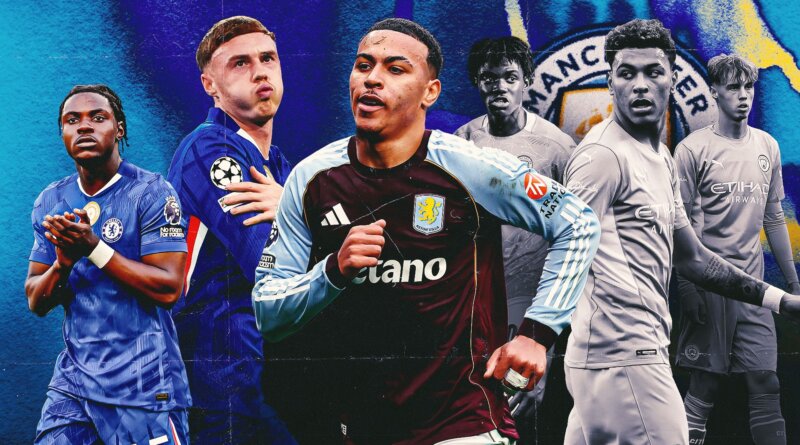Man City Youth Exits: Evaluating the Impact of Academy Departures
Manchester City youth exits have been a recurring topic as the club’s elite academy consistently produces promising talents. Yet, not all prospects find a pathway into Pep Guardiola’s first team. Instead, many have left the Etihad to shine elsewhere, raising questions: Were Man City right to sell their top academy talents like Morgan Rogers, Cole Palmer, and others?
Man City Youth Exits: The Academy’s Challenge
Pep Guardiola, a La Masia graduate himself, has always valued youth development. At Barcelona, he famously promoted Busquets and Pedro, helping forge a legendary team. At Manchester City, the story has been different. While Phil Foden, Rico Lewis, and Nico O’Reilly have made the step up, most academy stars have struggled to break into the first team, often due to fierce competition for places and the club’s pursuit of instant success.
Morgan Rogers: From City Exit to Villa Key Man
When City take on Aston Villa, they’ll face Morgan Rogers, a player who embodies the unpredictable outcomes of youth exits. After leaving Man City for Middlesbrough in 2023, Rogers developed significantly, eventually becoming a crucial figure for Villa and earning comparisons to England’s best midfielders. At the time, Rogers himself admitted he was not ready for City’s demands—a verdict that supports City’s decision. Today, however, his rise suggests he may have been a hit-in-waiting.
Cole Palmer: The One That Got Away
Cole Palmer’s departure is perhaps the biggest anomaly among Manchester City youth exits. Palmer impressed at every youth level and even left his mark in the City first team. Despite this, he joined Chelsea for £42m, quickly emerging as one of the Premier League’s most productive attacking midfielders. His performances at Chelsea, including 22 league goals and 11 assists in his debut season, indicate that City may have missed out on their next homegrown superstar—a clear miss in retrospect.
Other Notable Departures: Hits and Misses
Several other academy graduates have taken varied paths:
- Jeremie Frimpong: Dismissed as too slight, the right-back found success at Celtic, Bayer Leverkusen, and now Liverpool. His dynamic displays, especially when City needed full-back reinforcements, make his exit look like a missed opportunity.
- Michael Olise: Briefly at City, Olise’s journey took him to Reading, then Crystal Palace, and now Bayern Munich—where he is a creative force. His progress raises questions about City’s scouting and patience with late bloomers.
- Jadon Sancho: Left frustrated by lack of opportunities, Sancho shone at Dortmund before a big move to Man United. However, his struggles since returning to the Premier League suggest City’s timing in selling him was justified.
- Jamie Gittens: Like Sancho, Gittens moved to Dortmund before a high-profile transfer to Chelsea. His slow start in England means City’s decision is not yet clear-cut, but it was a calculated gamble.
- Liam Delap: A prolific academy striker, Delap was unlucky with injuries and the arrival of Erling Haaland. After loans and a move to Ipswich, he is now at Chelsea. With Haaland excelling, City can consider this a pragmatic move.
- Romeo Lavia: Sold to Southampton, then to Chelsea, Lavia’s injury struggles have prevented him from fulfilling his promise so far. City’s timing appears to have been right.
- Pedro Porro: Signed from Girona, but quickly loaned out, Porro is now a top full-back at Tottenham—a position City have struggled with. In hindsight, this could be viewed as a miss.
- Brahim Diaz: Sold to Real Madrid, Diaz’s career took off at AC Milan before returning to Madrid. While he scored against City in the Champions League, he’s not a regular starter, validating City’s decision to let him go.
Assessing City’s Transfer Strategy
The challenge for Manchester City lies in balancing youth development with the demands of competing at the highest level. With a squad packed with world-class stars, first-team opportunities are scarce. As Pep Guardiola noted, the club has seen “so many top, top-class players” come through the academy, but there’s simply not enough space for all.
The financial windfall from selling these young players often outweighs the risk of missing out on future stars. Yet, as seen with Palmer, Frimpong, and Porro, sometimes the one that got away truly stings.
Conclusion: Were City Right or Wrong?
The record of Manchester City youth exits is mixed. Some, like Phil Foden, have become icons at the Etihad. Others, such as Palmer and Rogers, are thriving elsewhere, suggesting more patience could have paid off. Ultimately, City’s strategy has produced both hits and misses—a testament to the unpredictable nature of youth football and the relentless pressure at an elite club.
Opinion: While selling young talent is often a necessity for a club chasing immediate glory, Manchester City’s approach could benefit from greater patience with select prospects. The cases of Palmer and Frimpong, in particular, highlight the fine margins between developing a future star and letting one slip away. For a broader perspective on these stories, visit for more news.
Your global gateway to nonstop football coverage:
News Goal
Share this content:
